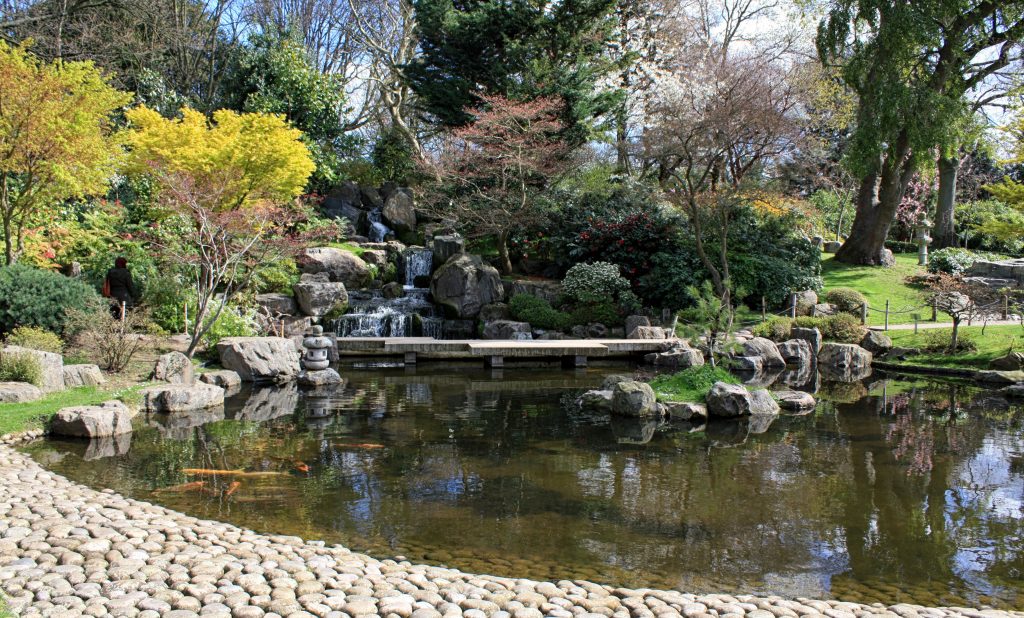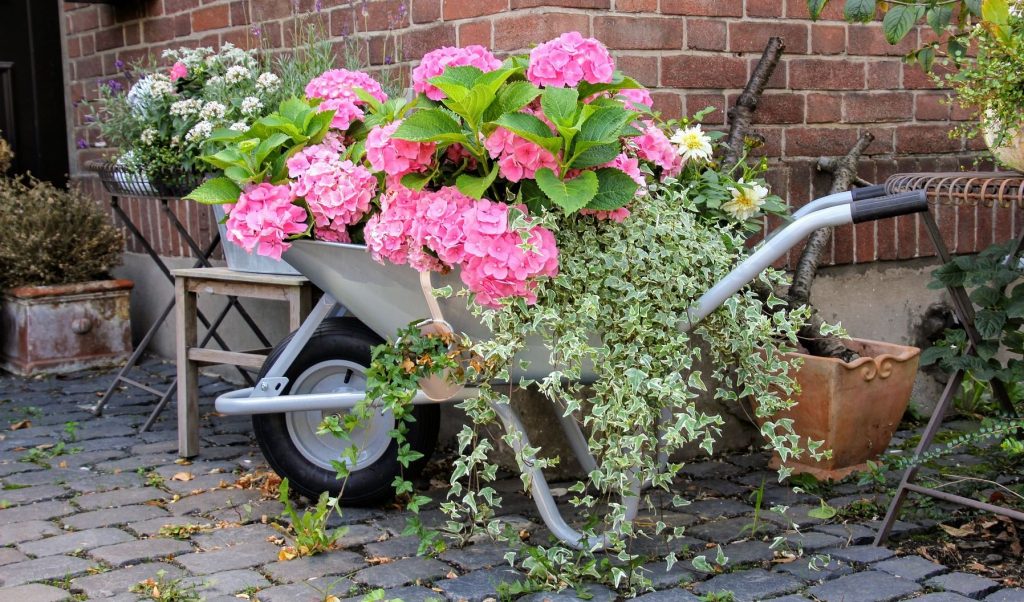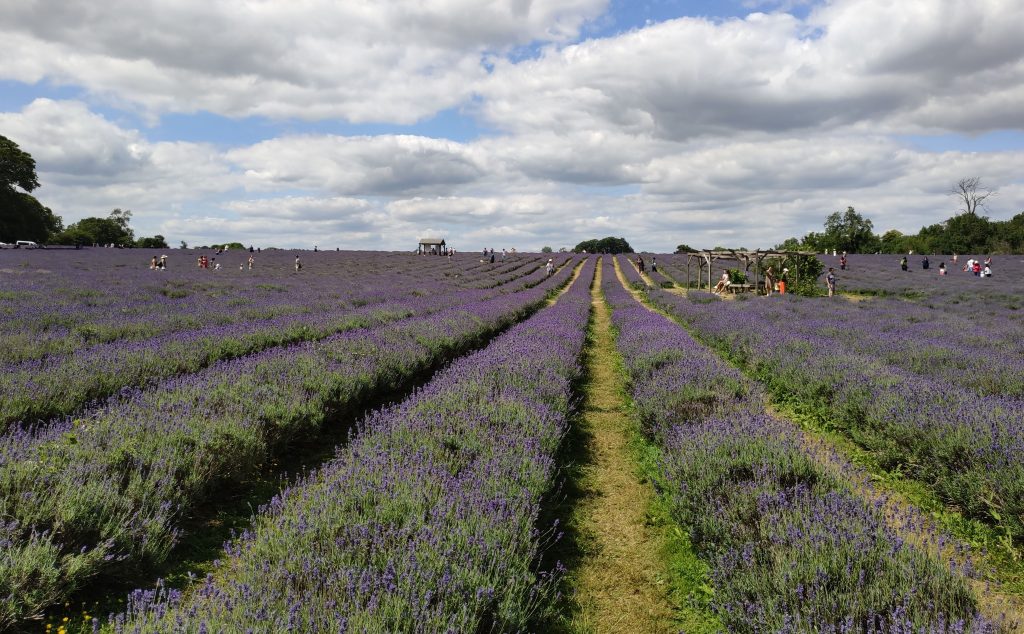
How to successfully design or maintain your garden this March
Gardens are extensions of our homes – they can be our outdoor kitchens, dining areas for the perfect garden parties and so much more. With the gardening season approaching, I wanted to interview landscaping experts and answer some of the questions regarding your DIY. Here’s what we have found out talking with Milena Ignjatijevic from Serbia and Tom Child from UK. There is a nice balance of functionality and beauty, with a great review on differences between garden designs of these two countries, so keep on reading.
1. Let me start by asking what is the best part of your job?
Milena: Giving spaces a new life, connecting functionality and aesthetics.
Tom: Working outdoors! It’s a good reason to be outside even when the weather is bad. Watching plants grow and observing the seasons is even more rewarding when you have been caring for that space.
2. Which garden design styles do you prefer?
Milena: I like City and Courtyard, Japanese and Mediterranean garden style.

Tom: I like cottage gardens and more natural gardens incorporating native and common species with a view to attracting wildlife.
3. Travelling between UK and Serbia, what key differences in landscape design could you notice? How would you describe typical English and Serbian gardens?
Milena: Uh! (laughter) Main differences are the money and willingness to invest in professional design. Gardens in the UK are bigger, they have a lot of hedges, lawn areas and decorative plants. While gardens in Serbia are usually with fruit trees, and have less designed areas. Although that can differ as well, but I was referring to common people’s gardens.
I’d say a typical English garden has a big nice decorative lawn, hedge, flower beds but I think, Tom can give us a better answer to that question.
A typical Serbian garden has a lot of fruit trees, it has a lawn, rose gardens and vegetables.

Tom: Serbian gardens seem to be more functional, and used for fruit and vegetables, however my experience is limited.
English gardens tend to fall into a few different types. Traditional town gardens are neat and use Ligustrum, Buxus or Prunus Laurocerasus with small patches of lawn and usually paving. In rural areas small “cottage gardens” would combine densely planted borders of perennials with vegetable or foliage plants. Foxgloves, Delphimuims, Hollyhocks and Myosotis are all staples of these gardens.
However, most gardens fall between these. Most British gardens have a lot of lawns space with borders of shrubs and plants, as well as smaller trees. Borders usually have some sort of hedge. Paving and/or decking are becoming more common in British gardens as lawns are becoming smaller or following the desire for more useable seating space.
4. How to approach a new landscaping project?
Milena: In the first place by thinking about functionality of the space, creating zones for different use, thinking of shapes and lines and choosing plants.
Tom: I would consult an experienced landscape architect if at all possible! If it isn’t; replicate or combine tried and tested ideas. Planning as much as possible will avoid problems when planting.
5. Where do you find your inspiration when starting a new project?
Milena: Inspiration can come from various places, but where I like to start first is looking around its surroundings, seeing what could fit with the style, shapes, and size, also exploring what is needed or envisioned in the space so that it can be used in the best way.
Tom: My projects usually involve renovation or corrections of gardens people already have. But these situations (I call “Jungle clearance”) make it very clear what plants thrive and which ones do not in a particular space. Certain plants are found together because they work in those spaces. Looking at gardens, woodland or parks nearby with similar soils will give a great idea of how successful you will be. It will also show how well certain colours will work together. I try to highlight problem areas such as shady areas, dry slopes or areas under dominant plants (Walnut trees, Rhododendron or thirsty conifer trees) and work out what could be done with those spaces; leave the easy spaces where many species could grow until last.
There tends to be a generational bias towards or against styles of plants. For instance, a garden planted in the 1980’s may have a lot of evergreen trees or topiary, Mahonias, an abundance of Hydrangeas and variegated species of Ilex or other plants. However, some of these plants can be used or incorporated (if they are already planted) into a more contemporary or even natural looking garden without looking dated or unoriginal. It just takes some thought about pairing them with other species.

6. What can we do for our gardens this March?
Milena: If you already have a garden, now is the last chance to do some maintenance and prepare it for the growing season. That means pruning, removing unwanted plant parts, taking care of the lawn and such. It’s a good time for planting summer flowering lily bulbs (like Dahlia, deciduous and bare-rooted trees and shrubs, evergreens and conifers as well as silver-leaved shrubs like Artemisia, Lavender, Rosemary and Santolina.
Lavender and Rosemary plants are low maintenance plants which can add smell and colour to your garden and have practical use as cooking spices. They look nice and are generally resistant – they don’t need a lot of water or sun.
March is a good time to plant roses, fruit trees or bushes.
As for typical selection for March, I would rather say what could be planted beforehand, so it flowers in March. Tulips can be a nice sign of spring that adds elegance and colour, as well as Narcissus.

Tom: March is the time to move from late winter pruning jobs to focussing on germinating seeds. March and April are important months to start growing vegetables indoors that need a long growing season in the UK such as courgettes, peppers, chillies, as well as flowers such as cosmos, salvia and petunia.
Personally, I will be growing chillies and paprikas and taking time to plant summer flowering bulbs like Milena has chosen. Supply of bare root trees/whips usually ends in March. So, it is a good time to get any bare root hedging/trees ordered while nurseries are still stocking them and planting.
Depending on rainfall and sunshine…lawn maintenance season is here and it’s time to start mowing. It is also time to decide if your lawn has a problem with moss or needs rectification work before summer arrives – feeding, scarifying, etc. should take place from late March.
7. What are some common mistakes you’ve noticed people usually make?
Milena: Not thinking about the whole flowering season and choosing plants accordingly. Not all plants look attractive at the same time so it’s good to think what will look good in spring, summer or autumn and what can stay green in winter. There are some nice evergreens which have interesting fruits during winter, like Ilex.
Also, not pruning trees and shrubs or doing too little, because they think it hurts the plant, while it is a necessary thing to do for a plant’s best growth.
Putting too little or too much fertilizer; planting plants too close to each other (when planting we need to think how big the plant will be when it reaches its full growth); inconsistent watering or too much watering; not thinking about sunlight exposure when choosing a place for a plant; adding too many different plant species.
Tom: Usually the garden doesn’t get considered until warm weather arrives. By then many opportunities have been missed, such as winter pruning of fruit trees, buddleia, roses etc.
Lack of planning can result in all the plants being bought in a couple of trips to the garden centre and then the garden has lots of flowers at same times and little in others. Identifying when there is a lack of bloom and planting accordingly can be really satisfying. Often gardens have a lot of early blossom, spring colour or late summer flowers, but are usually green and featureless in between.
8. How to make the most of a small garden?
Milena: Use pots and shelves if you lack space. Choose a combination of a few decorative bigger plants and a few small ones that will add some accent to the space.
Tom: As well as plants, you can plant densely and water/prune as necessary.
9. Many of us do not actually have gardens. How to stay close to nature? How to spice up our balconies or at least what indoor plants would you recommend in order to stay connected?
Milena: If you have a balcony the choice is wider, you can add pots or hanging pots and, depending on the external factors, choose plants suitable for more or less sunlight, flower or leaf decorative plants etc.
As regards the indoor plants, a good starting point is to ask yourself how much time do you want to invest in maintaining your plants since indoor plants tend to be more sensitive.
Out of common indoor plants that are low maintenance ones which I would suggest – Sansevieria, Zamioculcus (good for shady places), Dracaena, Agloanema, also Spatiphyllum, Kentia palm, Ficus plants etc.
Fiddle leaf fig has been popular for a while, it is a bit of a moody plant, but it adds character to a space and it is usually a nice touch.
Tom: Growing foods can be fun and rewarding, such as small chilli plants. Herbs can take up just a little space on a window sill. Succulents are great for indoors. However, Milena is the expert for indoor planting!

10. What would be your advice for the perfect planting scheme?
Milena: Plant in groups of uneven numbers, put taller plants in the back, smaller in the front. Don’t put too many different species, choose parts for plants and leave open spaces for grass. Trees shouldn’t be too close to the house or to the side.
Tom: Working out what kind of soil you have and where the light falls in your garden will narrow the choice of species you can plant. Then consider how well the soil is drained and what colours you want to put together. The range of plants you have to plant should then be manageable. If in doubt, you can look for species that attract pollinators or benefit birds.
11. How can we achieve cheerful colours in our garden to brighten up the gloomy days?
Milena: You can plant perennials (which live for several seasons) and annuals (which only live for one season). Annuals usually have brighter colours and are more attractive plants, but you need to buy new ones every year. The choice is large. Perennials are consistent and can add nice colours as well, but generally are not as vibrant. So, it’s good to have a mix.
I would recommend choosing a general colour pallet that you want in your garden and choosing plants according to that. It’s not necessary to choose too many different plants, but choose a few and make groups.
Tom: Viburnum Tinus has lovely flowers to brighten things up before and into spring blossom. Prunus Spinosa (blackthorn) or flowering cherry Prunus have bright early blossom to brighten up the start of the season. In hedgerows one of the first and brightest green leaves is Hawthorn (Craetagus Monogyna), the blossom is beautiful and so are the berries later in the year. It is also invaluable to wildlife. It can be planted in the middle to the back of borders or even planted as a small standard. There are several decorative varieties such as “Paul’s Scarlet” with pink leaves.
12. What scented plants can we use to lift our spirits?
Milena: Lavender, Jasmine, Lilac.
Tom: Mock orange or lavender are my favourites.

13. Any advice on choosing the best herbs for your garden?
Milena: Depending on what you use in your kitchen – basil, oregano, mint, sage, rosemary are some of the common ones.
Tom: Just don’t plant mint into a bed or a border! Try some herbs with nice flowers like Thyme, Chives or Rosemary.
14. Which websites would you recommend for people designing their gardens on their own?
Milena: RHS.org.uk has a lot of practical info when choosing plants, but as for design, I usually go to Pinterest to get ideas.
Tom: RHS.org.uk or gardenersworld.com are good resources but viewing gardens in the real world is invaluable.
